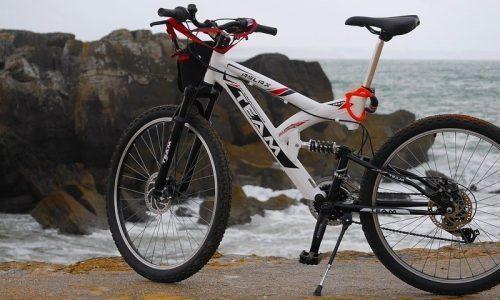Cycling is an incredible sport, and it has so many benefits for the rider. It makes us fit, is great for overall health, and is just so much fun. It can get competitive though, and sometimes we’re left wondering where we sit against other cyclists that are on the road. This article will speak about road bike riders and their average speeds.
The first thing to mention is when it comes to cycling and average speeds, there are a lot of variables that are going to govern that speed. To completely understand average speed, let’s start by talking about the variables.
Rider
The first place to start is to talk about you, the rider. You will have the biggest impact on the average speed. How old are you? The first point to make.
Young athletes in their prime typically will be stronger than an older athlete who has been through their prime. Weight is also a very big factor, and if you weigh more, you will typically be slower than a lighter cyclist who has the same muscle mass and power.
Terrain
The next thing we need to take into account is the terrain. Is where you live very hilly? If so, that does slow you down hugely and will massively affect your average speed. On the other side of it, if it is very flat, your average speed will typically be much higher.
We also need to think about tarmac and the road surface. Some surfaces are very smooth and offer a very small amount of rolling resistance, others actually make the bike very laggy, and it becomes very challenging.
Bike
The bike also makes a huge amount of difference. Although many cyclists say it comes down to your power mainly, the bike can make a very big difference.
An entry-level road racing bike is going to weigh more and more than likely be much less aerodynamic. A top of the line carbon fiber road racing is lighter and much more efficient, especially when equipped with carbon fiber wheels.
Weather
The weather will even make a big difference too. Cycling in the heat can be a lot more challenging as the body has to use much of its energy to actually stay cool. The same goes for when the body is cold and has to warm up also. The air pressure and time of day are also other factors that can influence your riding speed.
The biggest weather factor that changes riding speed is wind, but providing you finish where you started, then this isn’t something to be concerned about.
What is the Average Speed?
The best way to explain the average speed is to create a scenario and then give you figures from that. Let’s say the rider is 35 years old, on smooth roads with a moderate amount of elevation. The bike is mid-range, and the weather is ideal temperatures.
Beginner
9mph – 13mph
Average Rider
13mph – 17mph
Cyclist who trains
17mph – 23mph
Professional
23mph +
This is only a rough guide where we would put a cyclist. It does majorly vary depending on many factors. If you are looking for a more accurate way of seeing how strong you are, we can recommend other tests, such as an FTP test.
What’s an FTP test?
Suppose you want a more accurate representation of where you are. An FTP test is the way to go. FTP stands for Functional Threshold Power, and to determine this, you have to do an FTP test.
An FTP test is typically a 20 minute all out effort. In this test, you take your average power and then -5% off it to give you an FTP score. You will require a power meter or a smart turbo trainer to do this test as you must measure power.
This is a better accurate measure, but one thing that does change this greatly is the rider’s weight, so what most people do is take their FTP and they divide it by their weight in kg. For example, 220/80 = 2.75. This is valued as watts per kilo (WPK) and is a strong and accurate measure of how strong a cyclist you are. Here’s a rough guide.
 Beginner
Beginner
100 – 170 Watts
1 – 2 WPK
Average Rider
170 – 220
2 – 3 WPK
Cyclists who train
220 – 330
3 – 5 WPK
Professional
330+
5+ WPK
This is still a very rough guide, but it does give you a more accurate measurement. We believe it’s the best way to see how to measure up against other cyclists.
Some people will be more naturally suited to this test than others, depending on if you are an endurance cyclist or a sprinter.
Conclusion
Knowing where you’re at against other cyclists is natural, and we all get a little competitive at times. We recommend not worrying too much and just enjoy riding your bike.

Robbie Ferri has spent years working in a bike shop, has worked with industry leading brands on product creation, has been a semi pro athlete, and is a fully qualified strength and conditioning coach. He has broken World Records, bikepacked all over the World and raced ultra distance at a top-level.






Not sure there is an average ride equation ,even though the system seems logical.
How different my average speed/ power ratio would be if I was on a naked race bike vs. my Salsa gravel bike with self contained panniers on a week long ride. Not plastic and hotels, but tent and food on board. By the end of the week,it might be ones endurance increases, but speed ?